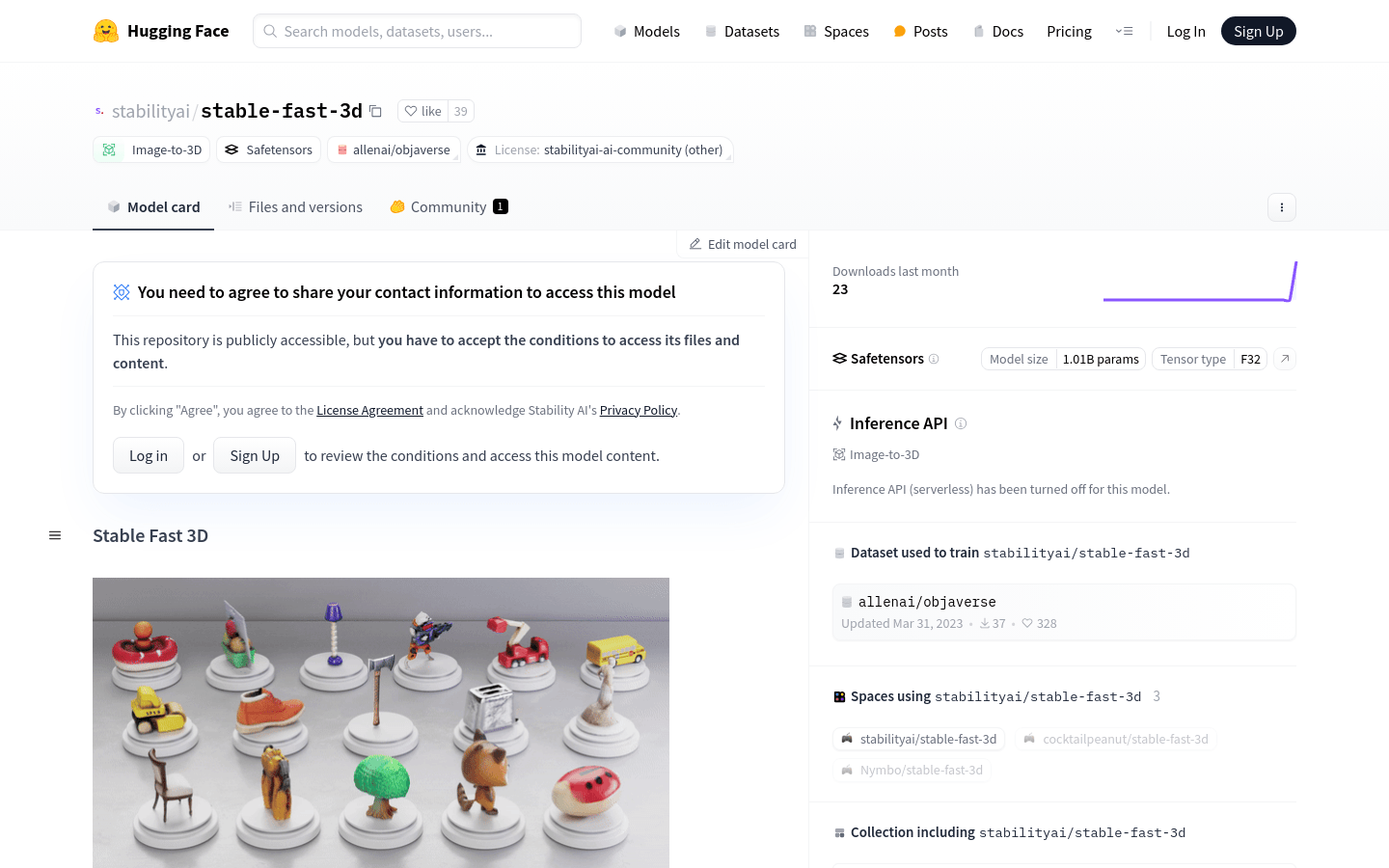

Stable Fast 3D
Overview :
Stable Fast 3D (SF3D) is a large reconstruction model based on TripoSR that can create textured UV-mapped 3D mesh assets from a single object image. The model is highly trained and can produce a 3D model in less than a second, offering a low polygon count along with UV mapping and texture processing, making it easier to use the model in downstream applications such as game engines or rendering tasks. Additionally, the model predicts material parameters (roughness, metallic) for each object, enhancing reflective behaviors during rendering. SF3D is ideal for fields that require rapid 3D modeling, such as game development and visual effects production.
Target Users :
SF3D models are primarily designed for professionals and organizations that require rapid creation of 3D models, such as game developers, film visual effects artists, 3D artists, and researchers. It is especially suited for those who need to generate high-quality 3D content within tight deadlines.
Use Cases
Game developers use SF3D to quickly generate 3D models of game characters and environments.
Film effects teams employ SF3D to reconstruct 3D scenes from real-world images for post-production effects.
3D artists create digital artworks using SF3D for exhibitions or online showcases.
Features
Quickly generate 3D models from a single image with high efficiency.
UV mapping and texture processing for ease of use in game engines or rendering software.
Predict material parameters of objects to enhance rendering effects.
Suitable for studying 3D reconstruction models and their limitations.
Generate artistic works applicable to design and other artistic processes.
Utilized for educational or creative tools.
How to Use
Visit the SF3D GitHub repository for usage instructions.
Prepare an object image with a resolution of at least 512x512 pixels.
Input the image into the SF3D model according to the usage instructions.
Wait for the model to process and generate the 3D mesh asset.
Check the generated 3D model to ensure it meets your requirements.
Import the 3D model into the desired game engine or rendering software.
Adjust the model's material and texture settings as needed.
Finalize the rendering of the 3D model or use it for other purposes.
Featured AI Tools

Stable Fast 3D
Stable Fast 3D (SF3D) is a large reconstruction model based on TripoSR that can create textured UV-mapped 3D mesh assets from a single object image. The model is highly trained and can produce a 3D model in less than a second, offering a low polygon count along with UV mapping and texture processing, making it easier to use the model in downstream applications such as game engines or rendering tasks. Additionally, the model predicts material parameters (roughness, metallic) for each object, enhancing reflective behaviors during rendering. SF3D is ideal for fields that require rapid 3D modeling, such as game development and visual effects production.
AI Image Generation
129.4K

Toy Box Flux
Toy Box Flux is an AI-driven 3D rendering model trained to generate images, merging existing 3D LoRA models with the weights of Coloring Book Flux LoRA, resulting in a unique style. This model excels in producing toy design images with specific styles, particularly performing well with objects and human subjects, while animal representations show variability due to insufficient training data. Additionally, it enhances the realism of indoor 3D renderings. The upcoming version 2 plans to strengthen style consistency by blending more generated and pre-existing outputs.
AI Image Generation
119.2K









